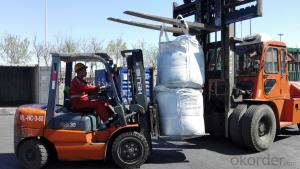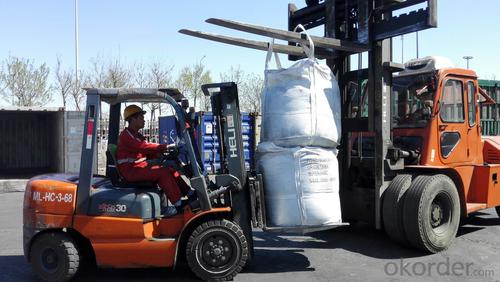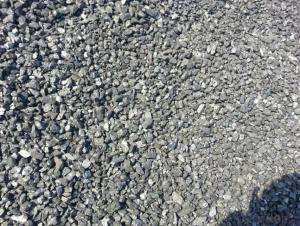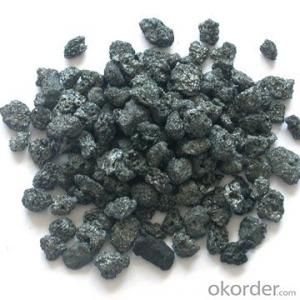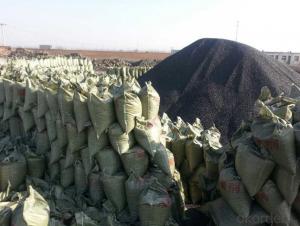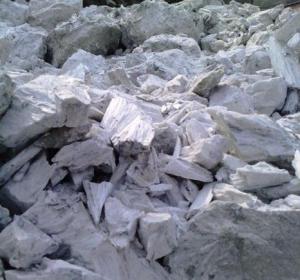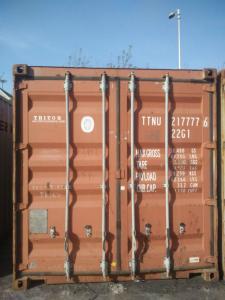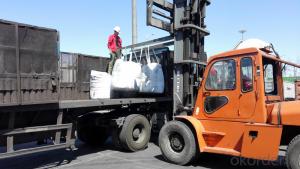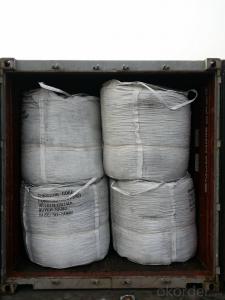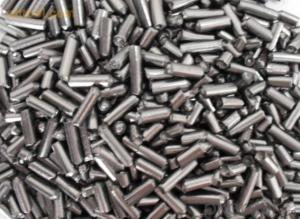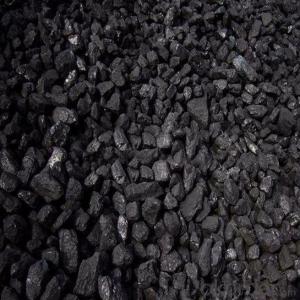S0.5% Recarburizer with VM 1%max for steel making
- Loading Port:
- Tianjin
- Payment Terms:
- TT OR LC
- Min Order Qty:
- 20.2
- Supply Capability:
- 1002 m.t./month
OKorder Service Pledge
OKorder Financial Service
You Might Also Like
Introduction:
Calcined anthracite can be called carbon additive, carbon raiser, recarburizer, injection coke, charging coke, gas calcined anthracite.
Best quality Anthracite as raw materials through high temperature calcined at over 2000℃ by the DC electric calciner with results in eliminating the moisture and volatile matter from Anthracite efficiently, It is playing more and more important role in the industry.improving the density and the electric conductivity and strengthening the mechanical strength and anti-oxidation. It has good characteristics with low ash, low resistivity, low sulphur, high carbon and high density. It is the best material for high quality carbon products. It is used as carbon additive in steel industry or fuel.
Features:
G-High Calcined Anthracite is produced when Anthracite is calcined under the temperature of 1240°C in vertical shaft furnaces. G-High Calcined Anthracite is mainly used in electric steel ovens, water filtering, rust removal in shipbuilding and production of carbon material.
Specifications:
F.C.% | 95MIN | 94MIN | 93MIN | 92MIN | 90MIN | 85MIN | 84MIN |
ASH % | 4MAX | 5MAX | 6 MAX | 6.5MAX | 8.5MAX | 12MAX | 13MAX |
V.M.% | 1 MAX | 1MAX | 1.0MAX | 1.5MAX | 1.5MAX | 3 MAX | 3 MAX |
SULFUR % | 0.3MAX | 0.3MAX | 0.3MAX | 0.35MAX | 0.35MAX | 0.5MAX | 0.5MAX |
MOISTURE % | 0.5MAX | 0.5MAX | 0.5MAX | 0.5MAX | 0.5MAX | 1MAX | 1MAX |
Pictures
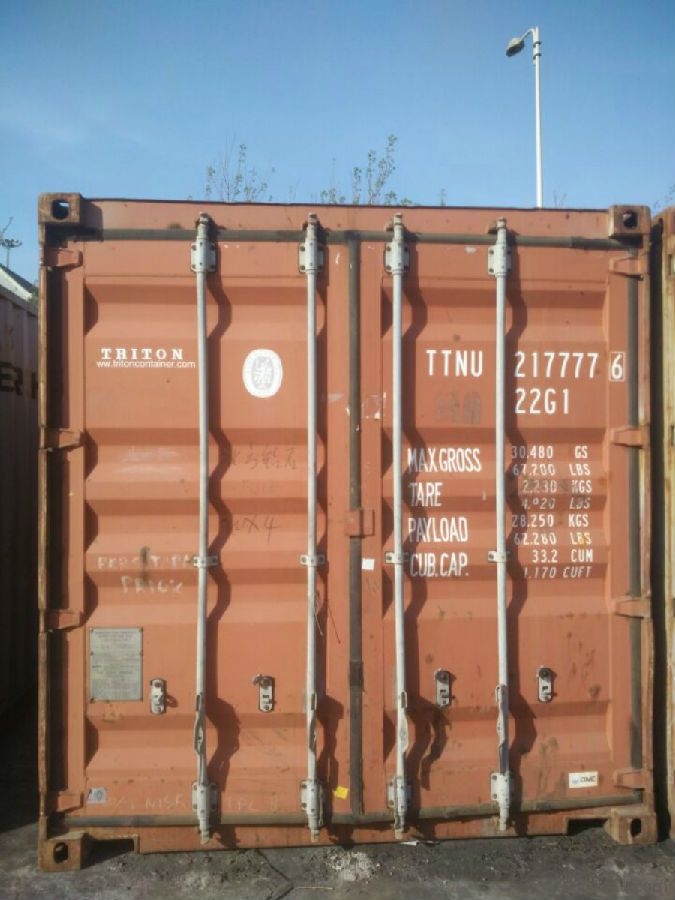
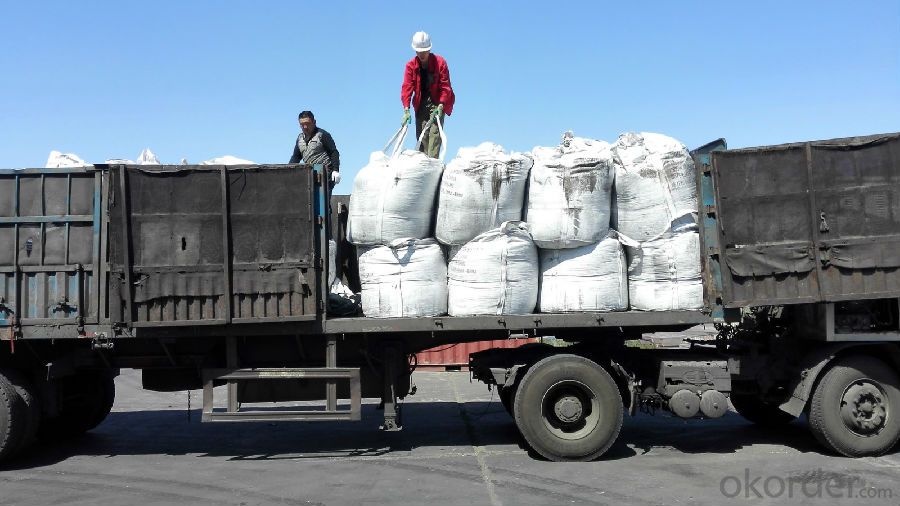
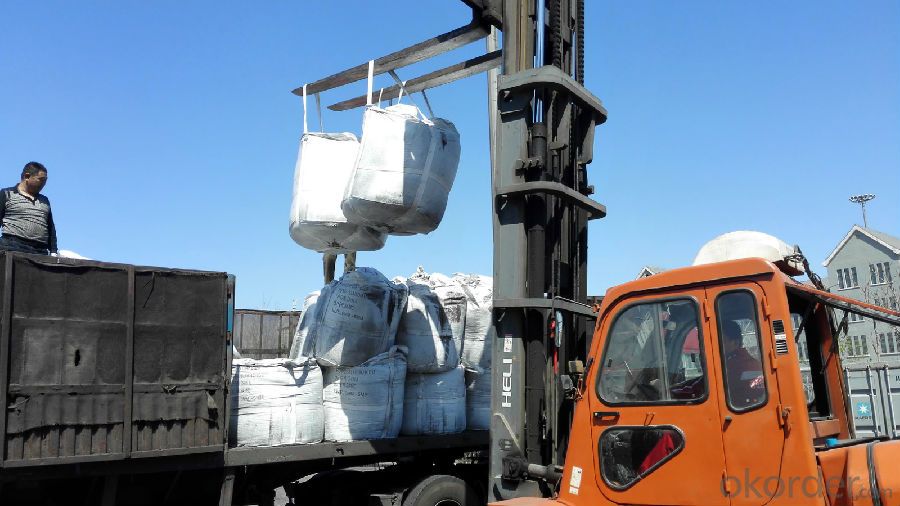
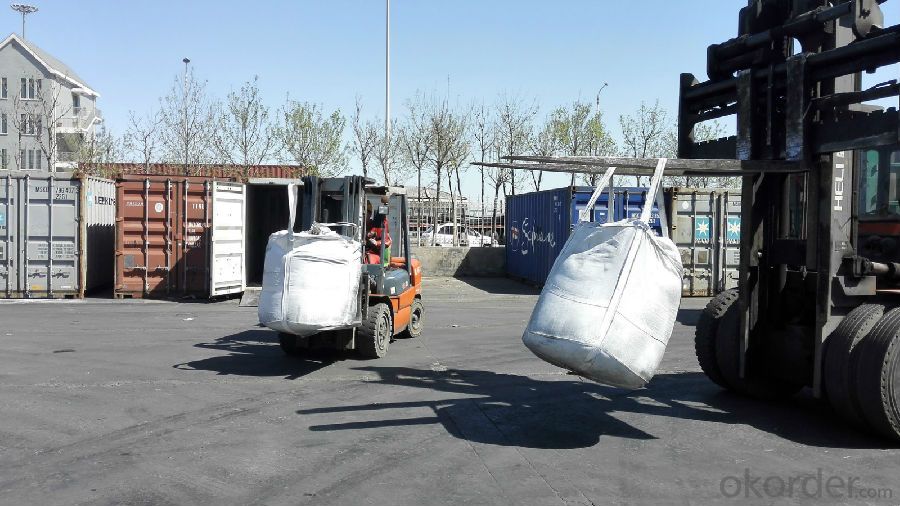
FAQ:
Packing:
(1). Waterproof jumbo bags: 800kgs~1100kgs/ bag according to different grain sizes;
(2). Waterproof PP woven bags / Paper bags: 5kg / 7.5kg / 12.5kg / 20kg / 25kg / 30kg / 50kg small bags;
(3). Small bags into jumbo bags: waterproof PP woven bags / paper bags in 800kg ~1100kg jumbo bags.
Payment terms
20% down payment and 80% against copy of B/L.
Workable LC at sight,
- Q: What are the effects of carbon emissions on the stability of ice shelves?
- Carbon emissions contribute to global warming, which in turn leads to the melting of ice shelves. As carbon dioxide is released into the atmosphere, it acts as a greenhouse gas, trapping heat and causing a rise in temperature. This increase in temperature accelerates the melting of ice shelves, ultimately destabilizing them. The loss of ice shelves disrupts the delicate balance of the polar regions, leading to rising sea levels and increased risk of coastal flooding. Additionally, the melting of ice shelves can also contribute to the release of large quantities of freshwater into the ocean, potentially affecting ocean currents and disrupting marine ecosystems. Overall, carbon emissions have a significant negative impact on the stability of ice shelves and the overall health of our planet.
- Q: How does carbon impact the prevalence of tsunamis?
- Carbon does not directly impact the prevalence of tsunamis. Tsunamis are primarily caused by seismic activity, such as earthquakes or volcanic eruptions, which are unrelated to carbon emissions. However, rising carbon levels can contribute to global climate change, leading to the melting of polar ice caps and potentially increasing the risk of coastal flooding, which can indirectly amplify the impact of a tsunami.
- Q: What are the different allotropes of carbon?
- The different allotropes of carbon include diamond, graphite, graphene, carbon nanotubes, and fullerenes.
- Q: What is the structure of a diamond, a form of carbon?
- A diamond, which is a form of carbon, has a crystal lattice structure. In this arrangement, each carbon atom is covalently bonded to four other carbon atoms, forming a tetrahedral arrangement. This creates a repeating pattern and a three-dimensional network of carbon atoms. The bonds between the carbon atoms are incredibly strong, which is why diamonds are so hard and durable. The carbon atoms in a diamond are arranged in a cubic crystal system, specifically the face-centered cubic (FCC) structure. In this system, each carbon atom is surrounded by eight neighboring carbon atoms, resulting in a dense and tightly packed structure. The strong covalent bonds and compact arrangement of carbon atoms in the diamond lattice give diamonds their unique properties. These properties include exceptional hardness, high thermal conductivity, and optical brilliance.
- Q: How does carbon affect the formation of permafrost thawing?
- Carbon affects the formation of permafrost thawing by accelerating the process through its release into the atmosphere. As permafrost thaws, it exposes organic matter that has been frozen for centuries, releasing carbon dioxide and methane, both potent greenhouse gases. This additional carbon in the atmosphere further enhances the warming effect, leading to a positive feedback loop where increased temperatures cause more permafrost thawing, releasing more carbon, and exacerbating climate change.
- Q: How do you distinguish between alkaline and ordinary carbon cells?
- The alkaline cell of the carbon cell can touch the ring groove at the end of the negative electrode, and there is no groove in the cylindrical surface of the ordinary dry cell, because the two sealing methods are different.
- Q: How does carbon impact the formation and intensity of hurricanes?
- Carbon, specifically in the form of carbon dioxide, plays a significant role in impacting the formation and intensity of hurricanes. The increase in carbon emissions due to human activities, such as burning fossil fuels, deforestation, and industrial processes, has led to a rise in atmospheric carbon dioxide levels. This, in turn, contributes to the phenomenon known as global warming. Global warming, caused by the greenhouse effect, leads to an increase in sea surface temperatures. Warmer ocean waters provide the necessary energy and moisture for hurricanes to form and intensify. As the atmosphere warms, it can hold more water vapor, which acts as fuel for hurricanes, increasing their potential for stronger and more intense storms. The warming of the atmosphere also alters the atmospheric conditions that influence hurricane formation. It changes the vertical wind shear, which is the difference in wind speed and direction at different altitudes. Low wind shear is favorable for hurricane development, as it allows the storm to organize and strengthen. However, global warming can disrupt this balance and create unfavorable wind shear patterns, inhibiting hurricane development. Furthermore, the increased carbon dioxide levels in the atmosphere contribute to ocean acidification. As carbon dioxide dissolves in seawater, it forms carbonic acid, which lowers the pH of the ocean. Acidic waters can have detrimental effects on marine life, including coral reefs, which act as natural barriers against storm surges during hurricanes. The degradation of these ecosystems weakens their ability to protect coastal communities from the destructive impacts of hurricanes. In summary, carbon emissions and the subsequent increase in carbon dioxide levels have a profound impact on the formation and intensity of hurricanes. The warming of the atmosphere and ocean, along with changes in wind shear patterns, create conditions that favor the development and intensification of hurricanes. Additionally, ocean acidification resulting from excessive carbon dioxide levels weakens natural defenses against storm surges. It is crucial to address the issue of carbon emissions and reduce our carbon footprint to mitigate the potential consequences of climate change and its impact on hurricanes.
- Q: How does carbon monoxide affect human health?
- Carbon monoxide is a highly toxic gas that can have severe impacts on human health. When inhaled, carbon monoxide enters the bloodstream and binds with hemoglobin, the molecule responsible for carrying oxygen to our cells. This binding is extremely strong and prevents oxygen from being delivered effectively, leading to a condition called carboxyhemoglobinemia. The symptoms of carbon monoxide poisoning can vary depending on the concentration and duration of exposure. Initially, individuals may experience mild symptoms such as headache, fatigue, dizziness, and nausea. However, as exposure continues or at higher concentrations, these symptoms can progress to confusion, impaired judgment, loss of consciousness, and even death. One of the most dangerous aspects of carbon monoxide is its ability to go undetected, as it is colorless, odorless, and tasteless. This makes it challenging to recognize its presence without proper monitoring equipment. Carbon monoxide poisoning can occur from various sources, including faulty heating systems, poorly ventilated appliances, and running engines in enclosed spaces. Prolonged or repeated exposure to carbon monoxide can have long-term health consequences. It can lead to neurological damage, memory loss, cognitive impairment, and even permanent brain damage. Additionally, it can exacerbate existing cardiovascular conditions, increasing the risk of heart attacks and strokes. To protect ourselves from carbon monoxide poisoning, it is crucial to have proper ventilation and functioning carbon monoxide detectors in our homes and workplaces. Regular maintenance of appliances and heating systems is also essential to minimize the risk of leaks. Recognizing the symptoms of carbon monoxide poisoning and seeking immediate medical attention are vital in preventing severe health outcomes.
- Q: What is the relationship between carbon emissions and deforestation?
- The relationship between carbon emissions and deforestation is closely intertwined. Deforestation refers to the permanent removal of trees and vegetation in forests, usually to make way for agricultural land, urban development, or logging. This process releases large amounts of carbon dioxide (CO2) into the atmosphere, contributing to greenhouse gas emissions and climate change. Trees play a crucial role in mitigating climate change as they absorb CO2 from the atmosphere through photosynthesis and store it in their tissues. When forests are cleared, this carbon storage capacity is lost, and the carbon previously stored in trees is released back into the atmosphere. Deforestation is estimated to be responsible for around 10% of global greenhouse gas emissions. Furthermore, the burning of forests, a common practice during deforestation, also contributes to carbon emissions. When trees are burned, the stored carbon is released as CO2, exacerbating the greenhouse effect. This is particularly significant in tropical regions where deforestation is prevalent, such as the Amazon rainforest. Conversely, reducing deforestation and promoting reforestation can help mitigate carbon emissions. By preserving existing forests and planting new trees, we can enhance carbon sequestration and reduce the amount of CO2 in the atmosphere. Forest conservation and restoration efforts are crucial components of global climate change strategies, as they not only help combat climate change but also preserve biodiversity and provide vital ecosystem services. In conclusion, the relationship between carbon emissions and deforestation is clear: deforestation leads to increased carbon emissions, while forest conservation and reforestation efforts help reduce carbon dioxide levels in the atmosphere. It is essential to prioritize sustainable land-use practices and support initiatives that protect and restore forests to mitigate climate change effectively.
- Q: What is the atomic weight of carbon?
- The atomic weight of carbon is approximately 12 atomic mass units.
Send your message to us
S0.5% Recarburizer with VM 1%max for steel making
- Loading Port:
- Tianjin
- Payment Terms:
- TT OR LC
- Min Order Qty:
- 20.2
- Supply Capability:
- 1002 m.t./month
OKorder Service Pledge
OKorder Financial Service
Similar products
Hot products
Hot Searches
